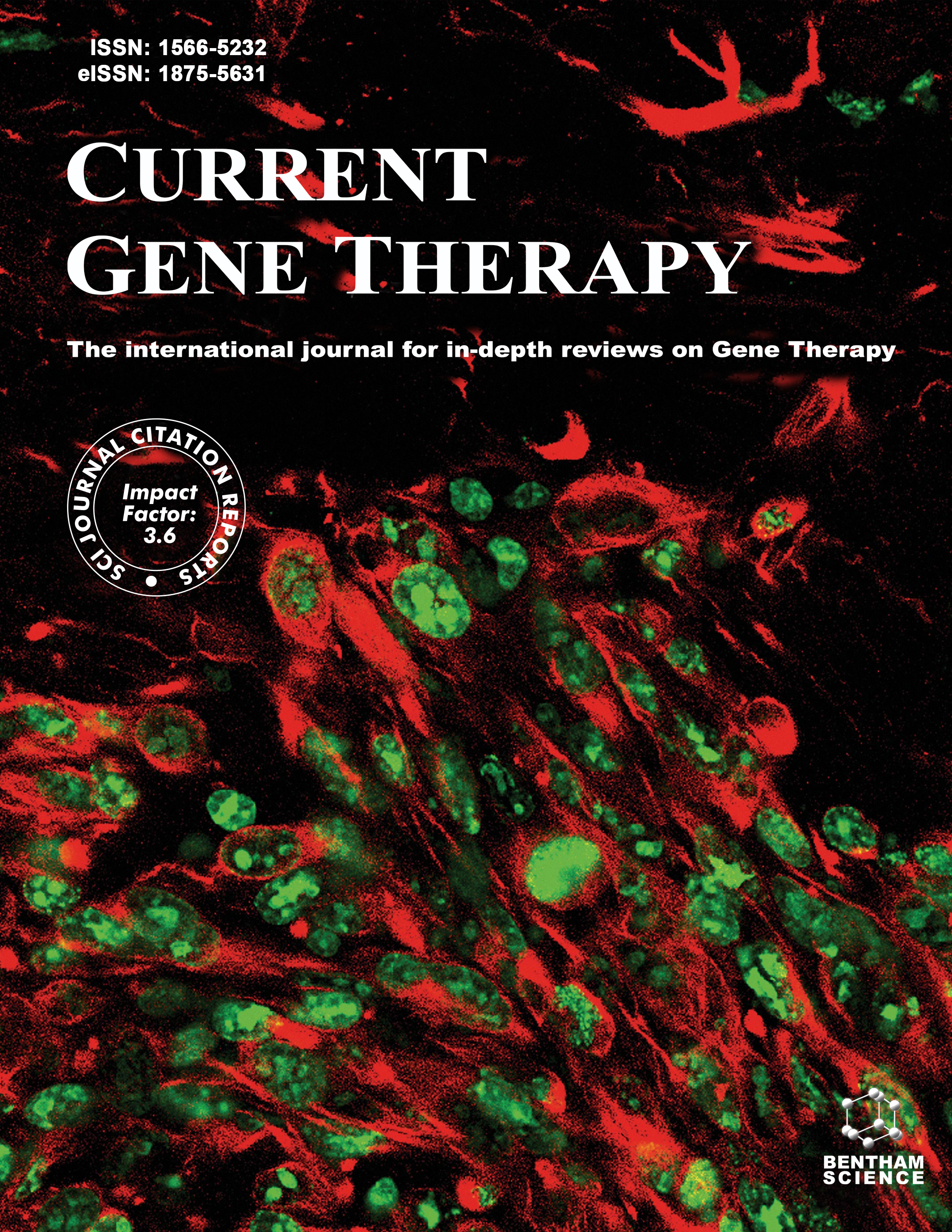-
oa Editorial [Hot Topic: Naked Plasmid DNA for Gene Therapy (Guest Editors: Munehisa Shimamura & Ryuichi Morishita)]
- Source: Current Gene Therapy, Volume 11, Issue 6, Dec 2011, p. 433 - 433
-
- 01 Dec 2011
- Previous Article
- Table of Contents
- Next Article
Abstract
Gene therapy is a promising approach to achieve long-term expression of targeted genes, and is expected to be a useful tool for the treatment of currently untreatable diseases. Although there are various methods to transfer genes, naked plasmid DNA has attracted researchers because of its ease of handling and safety. However, the design of gene cloning vectors and the choice of gene delivery vectors are important to achieve effective transgene expression. In this special series, these points are well discussed. For example, Prof. Oleg E. Tolmachov provided the principles and technical information for the effective design of plasmid gene vectors. His review also showed how to control transgene expression and how to avoid an immune response induced by the CpG motif in plasmid DNA, for highly efficient transfection efficiency. Prof. Yasufumi Kaneda introduced the concept of liposomes, fusion-mediated gene delivery systems using hemagglutinating virus of Japan (HVJ), and HVJ-envelope vector. This review discussed the usefulness of these delivery vectors for tissue targeting, using conjugation with biocompatible polymers or modification of fusion proteins with targeting of molecules by genetic engineering. Prof. Keiji Itaka and collaborators reviewed the progress and future prospects in the development of polyplex nanomicelles. They summarized the history of the development of cationic polymers, such as polyethylenimine, and described their problems in clinical use. As solutions to these problems, several types of polyplex nanomicelles have been mentioned. The review also indicates the potential of nanomicelles for systemic gene delivery and promising strategies for controlling the profile of transgene expression as well as targeting transgene expression. In addition to these techniques, enhancement of transgene expression could be achieved using special devices. Prof. Tatsufumi Murakami and collaborators reviewed the usefulness of electroporation to improve transfection efficiency in muscle and skin and its application in DNA vaccines against cancer and infectious diseases. Prof. Yoshiaki Taniyama introduced the feasibility of ultrasound with microbubbles. This review provided information on the mechanisms of enhancing transgene expression and showed examples of its usefulness in experimental diseases. Technical review of the parameters of ultrasound and the kind of microbubbles are informative. The clinical and preclinical applications of naked plasmid DNA are summarized in three reviews. Prof. Cevayir Coban and collaborators provided a review on the molecular and immunological mechanisms by which DNA vaccines work and strategies to improve their efficacy. This information will help researchers in the field of DNA vaccines develop better ways to increase immunogenicity of DNA vaccines. Prof. Tetsuya Matoba and collaborators described gene therapy using plasmid DNA for the treatment of atherosclerotic cardiovascular disease, focusing on gene therapy targeting monocyte-mediated inflammation, and a novel nanoparticle-mediated gene delivery system. Prof. Munehisa Shimamura and collaborators introduced the application of plasmid DNA for central nervous system diseases, such as stroke, Parkinson disease, Alzheimer disease, and multiple sclerosis. Overall, these reviews described recent developments, prospects, and problems in the field of naked plasmid DNA-based medicine. To date, its clinical use has not been widely accepted, but several clinical trials are underway. Further improvement of transfection efficiency and safety will shed light on the development of new therapies for untreatable diseases.


